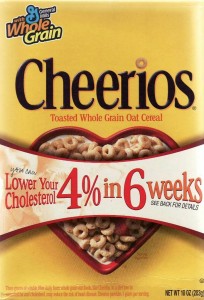Reply from the American Society of Nutrition
Last week, I posted correspondence regarding the American Society of Nutrition’s (ASN) partnership with the industry-sponsored Smart Choices program. This program places a check mark on food products that meet its nutrient standards. I am concerned about ASN’s involvement in this project as it puts the society in conflict of interest. Several other food rating systems are under development, among them the traffic-light system used in Great Britain. How can the ASN objectively evaluate the relative merits of these systems if it is paid for administering – and, therefore, endorsing – Smart Choices? I much prefer the traffic light system, have concerns about the entire approach, and think some of the standards overly generous, particularly the upper limits of 25% of calories from added sugars and 480 mg sodium per serving. Several people who commented on my post asked to see the ASN’s response. Here it is:
From: John E. Courtney, Ph.D., Executive Officer, American Society of Nutrition
Sent: Tuesday, May 12, 2009 10:24 AM
Subject: Sunday, May 10, 2009 10:36 AM email to Katrina DunnImportance: High
Dear Dr. Nestle,
Thank you for your comments on ASN and the Smart Choices program. We value feedback from our members and I’d like to take this opportunity to address some of your concerns and amend a few of the points you made. First, The Smart Choices Program is not an industry-initiated plan. The Smart Choices idea was facilitated by the Keystone Center, which works with a broad array of stakeholders to develop solutions to complex health and social problems. The Smart Choices front-of-pack symbol was developed through a series of plenary meetings over two years and intensive work groups with academics, food manufacturers, public health organizations, and with observers from federal agencies. This unique process with a broad array of stakeholders along with the fact that the program is completely transparent sets it apart from other programs that have been developed. In the fall of 2008, Keystone Center issued a RFP for organizations interested in administering the program. The ASN Executive Board was briefed on the program, discussed and evaluated it, and approved moving forward. ASN partnered with NSF to administer the program and was selected. ASN’s role will primarily be one of oversight and facilitation of the program governance, and the Society will be responsible for maintaining the scientific integrity in the Smart Choices program. This program was discussed at the ASN Volunteer Member Leadership Summit in January and most recently at the ASN Scientific Sessions and Annual Meeting at Experimental Biology in New Orleans, LA in April, 2009.
Perhaps most exciting for the Society and consistent with its mission is that ASN will be coordinating a rigorous evaluation of the program as well as consumer research to determine the effectiveness of the program. Perhaps most importantly, ASN neither “owns” the program nor are we making any profit from the program. The funds generated from company participants will be reinvested into the program. ASN is the pre-eminent society for nutrition researchers and practitioners and encourages scientific debate and transparency and is looking forward to evaluating the effectiveness of this program in helping consumers.
Thank you again for your comments and for your commitment to advancing nutrition research and practice.



